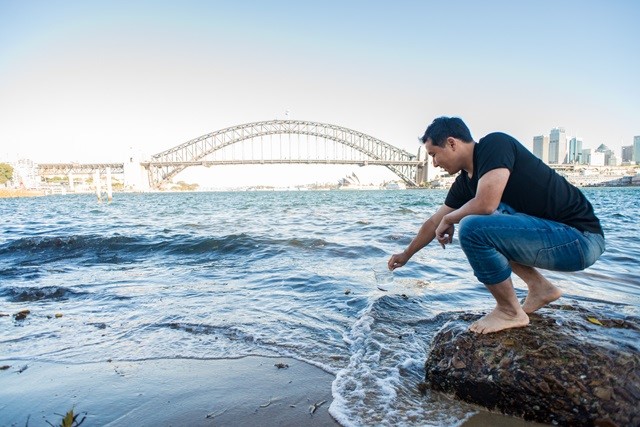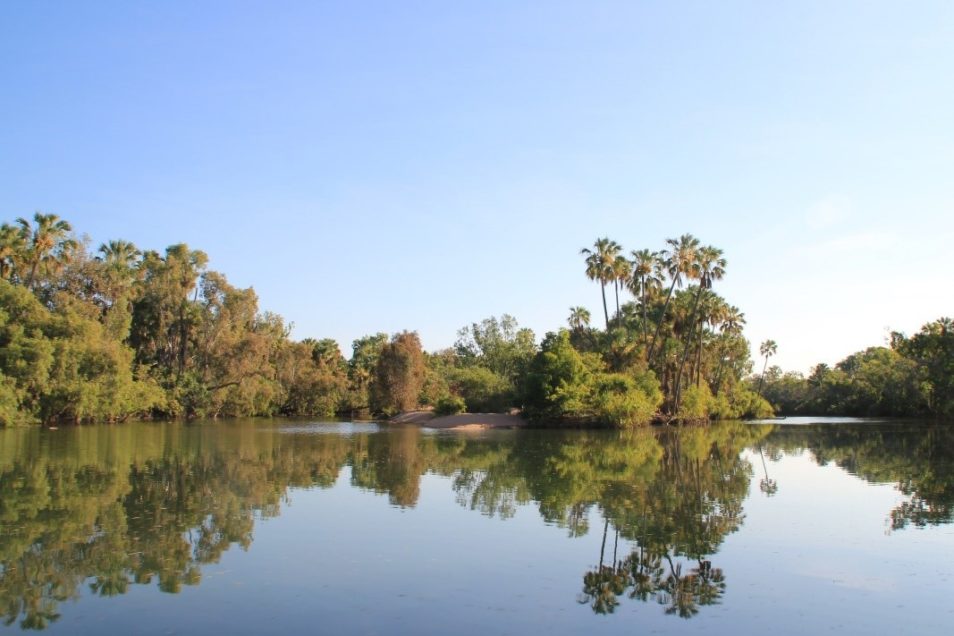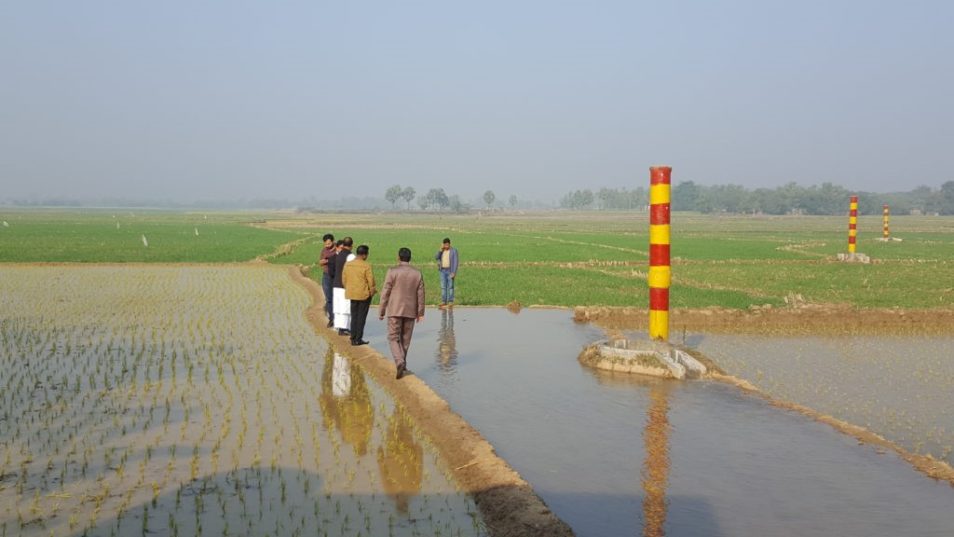
It’s World Water Day! Dr Seo collecting a water sample from Sydney Harbour. Image: CSIRO
Come on in, the water (research) is fine! This World Water Day, 22 March, we’re celebrating our watery research.
Our scientists are interested in water bodies around the world, from Sydney Harbour to rice fields in Bangladesh. Let’s take a dip into a little of our water research…
1. Storing water underground for dry times
Providing water security for Australia has never been more important. But, even after droughts break, we can’t lose sight of the fact that another drought will come.
We’re researching how we can prepare for water security before the taps run dry.
There’s no single solution to water security problems. One option could be to store water underground, a process known as ‘water banking’ or Managed Aquifer Recharge.
Our scientists are researching how water banking could keep our heads above water.
2. What lies beneath: understanding our groundwater resources
Groundwater is critical for many communities and industries across Australia. Simply put, we depend on it.
Between 1983 and 1996, humans’ use of groundwater nearly doubled, according to Geoscience Australia.
We’re using our expertise in water assessment and risk modelling to help sustainably manage Australia’s groundwater resources.
3. Working with Norfolk Island locals to find long term water solutions
Earlier this year, some households on Norfolk Island ran out of water. Locals were relying on the kindness of neighbours to top up their tanks.
Our scientists are providing water resource assessments and expert advice on how to improve the island’s water resilience, in the face of a changing climate and projected extended dry spells.
4. Tiny membrane purifies Sydney Harbour water
About one third of the world’s population, some 2.1 billion people, don’t have clean and safe drinking water.
As a result, millions – mostly children – die from diseases associated with inadequate water supply, sanitation and hygiene every year.
Enter Graphair. It’s a new filtering technique being developed by our Manufacturing research scientists. Graphair has the potential to make water purification simpler, quicker and more effective. It potentially solves one of the great problems with current water filtering methods: fouling.
The team took water samples from Sydney Harbour and ran it through a commercially available water filter, coated with Graphair. Tests showed Graphair continued to work even when coated with pollutants. Made from a specially designed form of graphene, this new technology could save lives around the world.
5. Water and agriculture
Many people around the world grow their own food to survive and to make a living. They have to think carefully about how much water their food requires. A team of our agriculture scientists have invented a helpful handheld device. It’s called Chameleon.
Chameleon measures how moist the soil is under crops. The farmer simply connects the reader to the sensors in the soil to get a reading for various depths in the profile. The best part? Chameleon only costs a few dollars to manufacture, making it a truly viable solution for farming communities around the developing world.
Closer to home, we’re researching water use efficiency for increased grain yield on farms. In some cases, we’re improving yield by as much as 91 per cent.
We’re also helping farmers to reduce the water footprint of high-value crops through WaterWise. Through this new technology, for the first time, growers can see in real-time the water stress of their crop and can predict their crops’ future water needs.

The Chameleon handheld device in action.
6. Water in the north: looking at the Roper River
The Roper River catchment, in the Northern Territory, is bigger than the main island of Tasmania. We’re working with the Australian Government to investigate science-based opportunities for water and agriculture development in the catchment.

The Roper River catchment presents many opportunities for agricultural development.
7. Our darling: science in the Murray-Darling Basin
The Murray-Darling Basin is Australia’s largest river basin. It covers 14 per cent of our country’s land area and supplies water to more than two million people.
Our scientists play an important role in providing the ecological expertise and rigorous science to underpin water management in the Basin.
Our Murray-Darling research includes understanding the water requirements of key ecological assets. This ensures environmental flows are delivered in a way that best supports the Basin’s environment.
8. Global water: Supporting other countries with science
From Peru to India, we’re working on water research and development projects in major river basins of the world.
Rapid economic growth, expanding population, and increasing prosperity are driving increased demand for water, food and energy security, especially in major river basins of developing countries. These challenges are exacerbated by climate change.
We have a long track record of work in Australia, South Asia, China, the Mekong and Africa, and expanding interests in Latin America. Our scientists are helping these countries to explore solutions to ease pressures on water, and to create pathways to sustainably and efficiently use this finite resource.
Read more about our international water research and development this World Water Day.

CSIRO has entered a scientific cooperation agreement with Water Resources Planning Organisation (WARPO) to support water reform in Bangladesh. Image: CSIRO.


23rd March 2020 at 4:43 pm
A lot of inland Australia has evaporation rates in the order of 1.5 m per annum which means that large volumes of water are being lost to evaporation. Aquifer storage can address this but many aquifers are open ended which means that the water is not retained. Many water authorities use floating plastic membrane covers on reservoirs to control both contamination and evaporation. There are ways to modify these floating covers to work without perimeter fixing or to work on canals which are currently not covered.
20th March 2020 at 5:43 pm
interested to read about use of Graphene to purify water , it seems to me this ingredient can remove small particles but cant do anything to reduce salt content of water . Please advise
25th March 2020 at 4:52 pm
Hi Terry, thanks for your question. Our GraphAir membrane is highly effective at removing salt. Our tests show that over 99.99% of dissolved salt is rejected. We conducted experiments with salty water synthesised in the laboratory (70 grams/litre NaCl), and with seawater collected from Sydney Harbour. Here’s the link to our publication in the journal Nature Communications with more details:
https://www.nature.com/articles/s41467-018-02871-3
Thanks,
Georgia
Team CSIRO